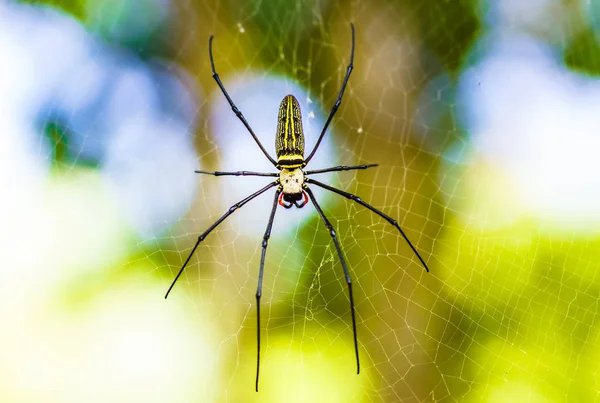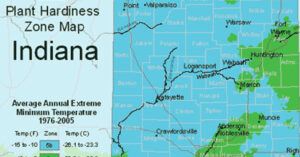
Introduction
Banana spiders, with their intimidating appearance and sometimes alarming presence, are a common concern for many homeowners. Understanding how to manage and prevent their populations is essential for maintaining a safe and comfortable living environment. In this article, we’ll explore effective strategies for identifying, deterring, and removing banana spiders from your surroundings.
Identifying Banana Spiders
Physical Characteristics
Banana spiders, also known as golden silk orb-weavers, are easily recognizable by their distinctive markings and coloration. They typically have large, elongated bodies adorned with yellow or golden hues, often accompanied by dark brown or black patterns. With leg spans reaching several inches, these spiders command attention with their formidable size. Their intricate webs, characterized by strong silk threads and spiral patterns, further distinguish them from other spider species.
Habitat Preferences
While banana spiders are native to tropical regions, they can be found in various habitats worldwide, including forests, gardens, and urban areas. In residential settings, they often favor secluded spots with ample vegetation and prey availability. Common nesting sites include bushes, trees, and outdoor structures such as fences or eaves. Environmental factors such as temperature and humidity influence their distribution, with warmer climates supporting more prolific spider populations.
Behavior and Habits
Banana spiders are skilled hunters, relying on their webs to capture flying insects like flies, moths, and beetles. They exhibit nocturnal behavior, remaining active during the night to hunt and repair their webs. Reproduction occurs seasonally, with female spiders laying egg sacs containing hundreds of eggs. While banana spiders are generally non-aggressive towards humans, accidental encounters can occur, leading to potential bites and discomfort.
Natural Repellents and Deterrents
Plant-Based Solutions
Harnessing the power of nature, certain plants and herbs possess spider-repelling properties. Aromatic plants like lavender, peppermint, and eucalyptus emit scents that deter spiders from establishing nests nearby. Essential oils derived from these plants can be diluted and applied as natural spider repellents. Incorporating spider-repelling plants into landscaping not only adds aesthetic appeal but also contributes to pest management efforts.
Environmental Modifications
Creating an inhospitable environment for spiders involves eliminating conducive conditions and access points. Regularly removing clutter and debris reduces hiding spots for spiders and their prey. Sealing entry points such as gaps in doors, windows, and screens prevents spider ingress into indoor spaces. Strategic lighting placement can also deter spider activity, as they tend to avoid well-lit areas.
Biological Control Methods
Introducing natural predators of spiders, such as birds, lizards, or predatory insects, can help regulate spider populations in outdoor environments. Biological agents like nematodes or microbial insecticides target specific pests while minimizing harm to beneficial organisms. Promoting biodiversity in the ecosystem fosters natural balance, reducing the need for chemical interventions.
Mechanical Removal Techniques
Physical Exclusion Measures
Preventing spider access to indoor spaces can be achieved through the installation of screens or barriers on windows and doors. Vacuuming and sweeping away spider webs and egg sacs eliminates existing infestations and discourages re-establishment. Manual relocation of spiders to outdoor habitats is a humane alternative to extermination.
Trapping Methods
Sticky traps and commercial spider catchers provide effective means of capturing and removing spiders from indoor environments. DIY trap designs using common household materials offer affordable and customizable options for controlling spider populations. Regular monitoring and maintenance of trap placements ensure ongoing efficacy.
Hygiene and Sanitation Practices
Maintaining cleanliness and orderliness indoors and outdoors reduces attractants for spiders and their prey. Regular cleaning routines, including dusting and vacuuming, help eliminate food sources and hiding places. Proper food storage minimizes the presence of insects that spiders feed on. Outdoor maintenance tasks, such as trimming vegetation and clearing debris, create less hospitable conditions for spider habitation.
Professional Pest Control Options
Consultation with Pest Management Experts
In cases of severe infestations or persistent spider problems, seeking professional assistance is advisable. Pest management experts can conduct thorough inspections to assess the extent of the infestation and identify contributing factors. Customized treatment plans are tailored to address specific needs and preferences, with follow-up inspections and preventive measures ensuring long-term success.
Chemical Treatments
Applying insecticides and spider repellents may be necessary in situations where non-chemical methods alone are insufficient. Careful consideration of safety and environmental impact is essential when choosing chemical treatments. Compliance with regulations and guidelines ensures responsible use and minimizes risks to human health and the environment.
Integrated Pest Management Approaches
Integrated pest management (IPM) combines multiple strategies to achieve effective and sustainable spider control. By integrating chemical and non-chemical methods, IPM aims to minimize reliance on pesticides while maximizing long-term prevention. Education and outreach efforts promote community awareness and empower individuals to take proactive steps in managing spider populations responsibly.
Conclusion
Banana spiders, with their striking appearance and ecological significance, play a role in maintaining natural balance and biodiversity. However, their presence can sometimes pose challenges for homeowners seeking to coexist peacefully with these arachnids. By employing a combination of identification, prevention, and removal strategies, individuals can effectively manage banana spider populations while fostering a safe and comfortable living environment for themselves and their families.


